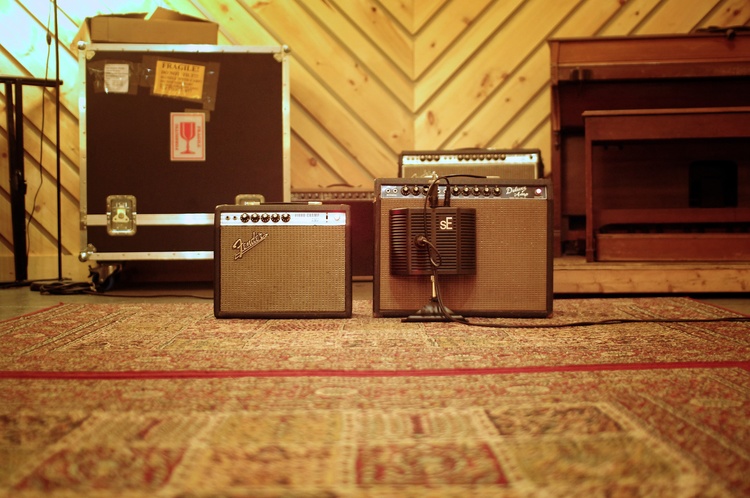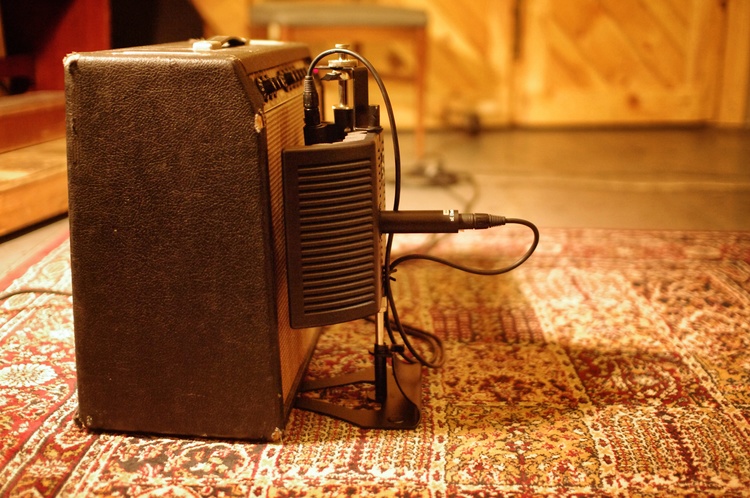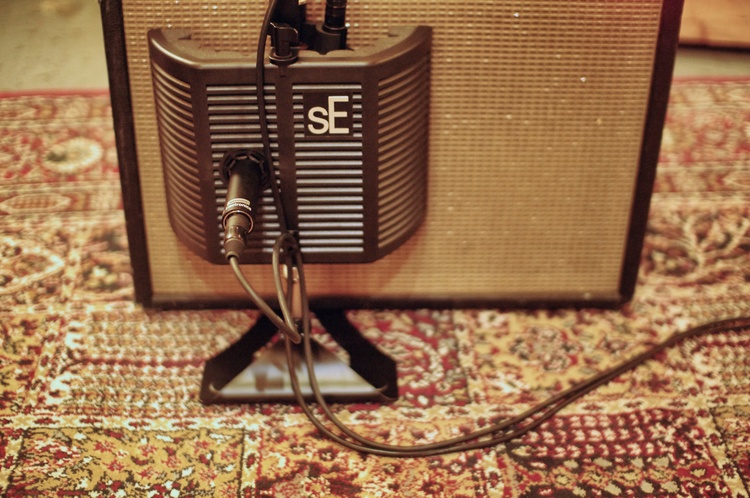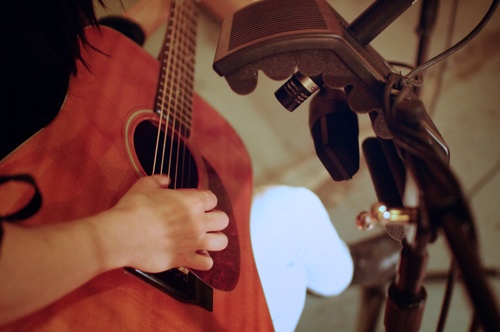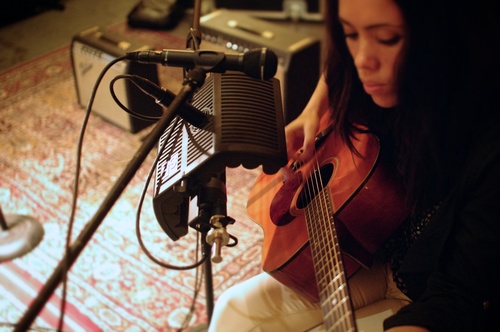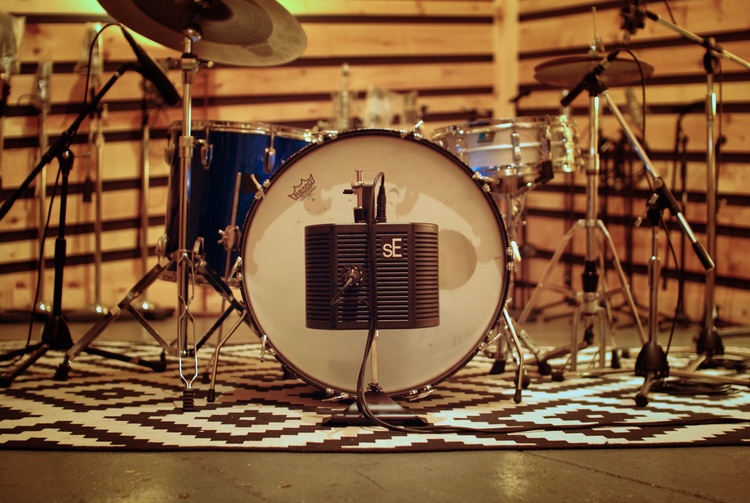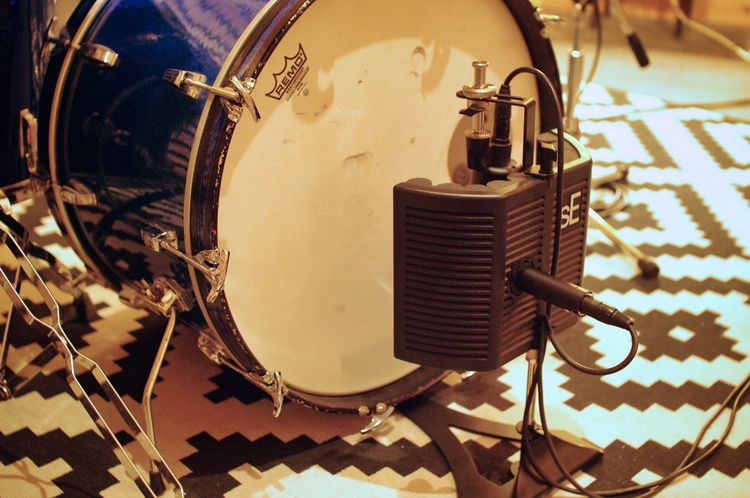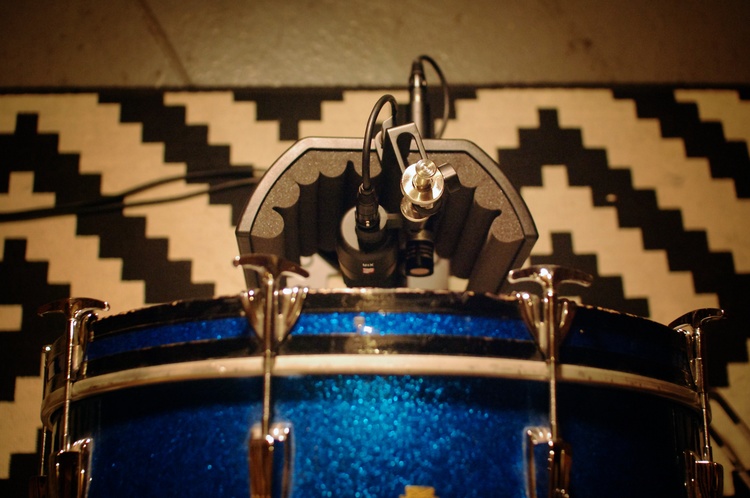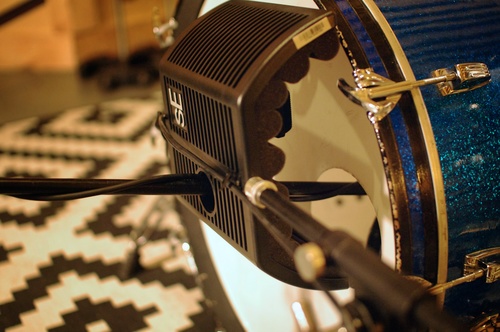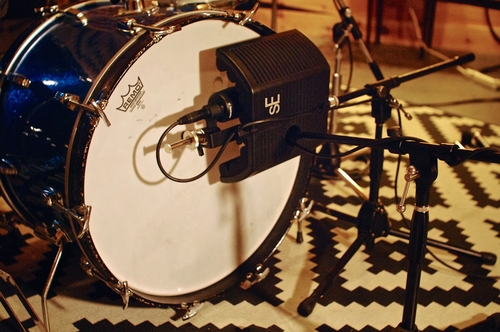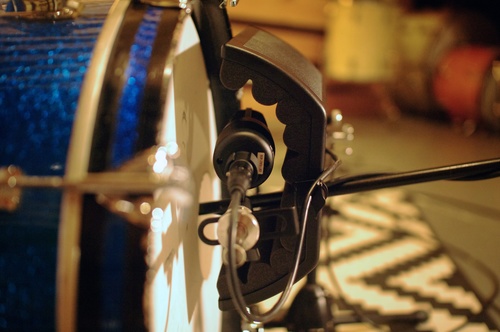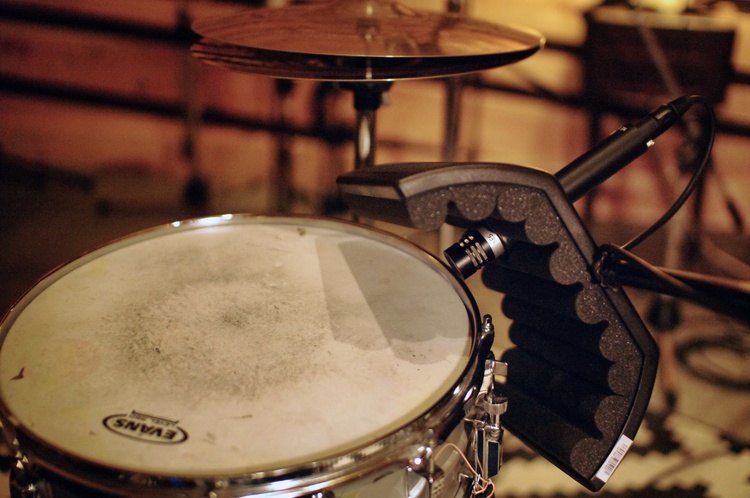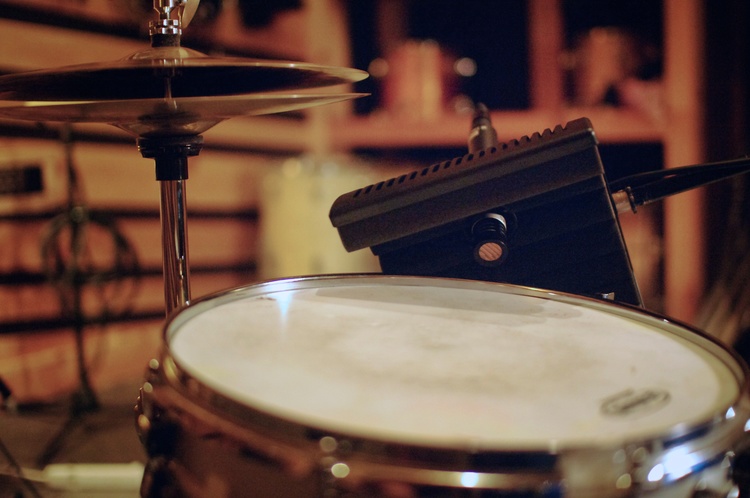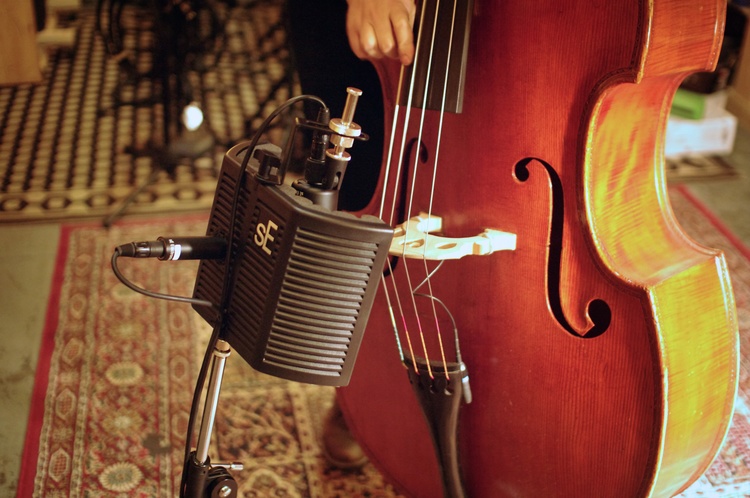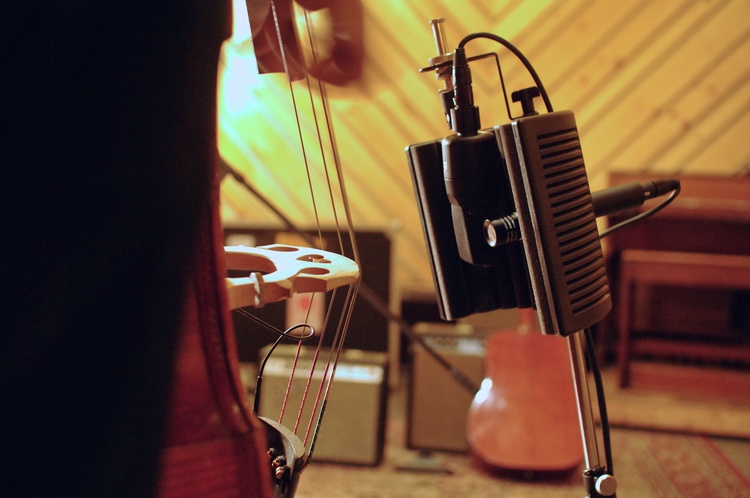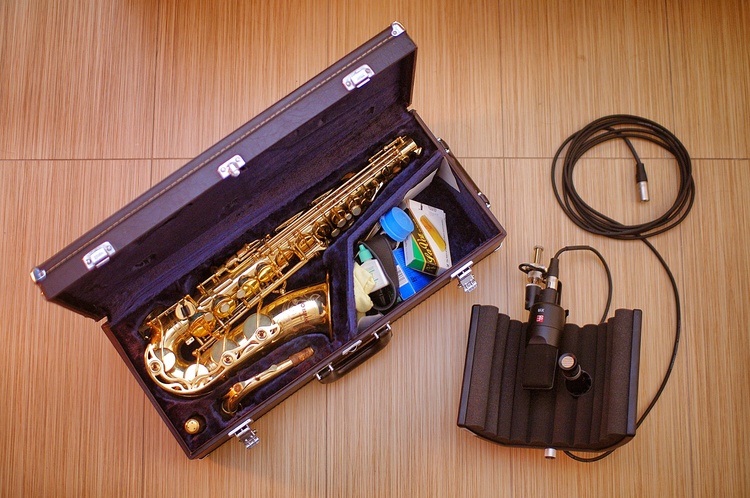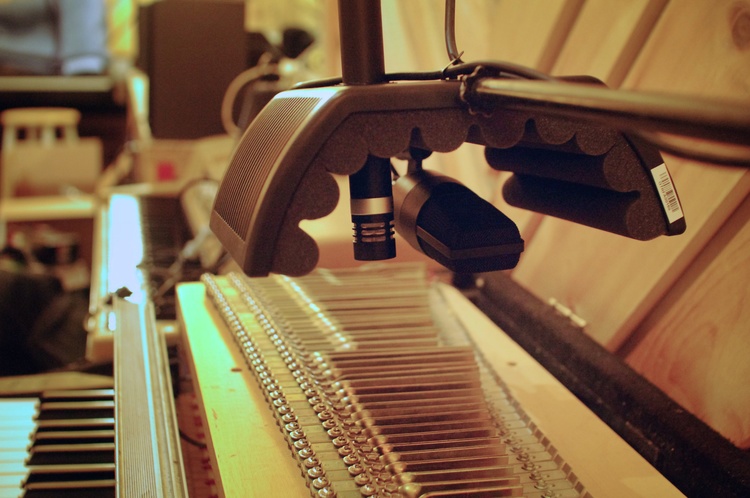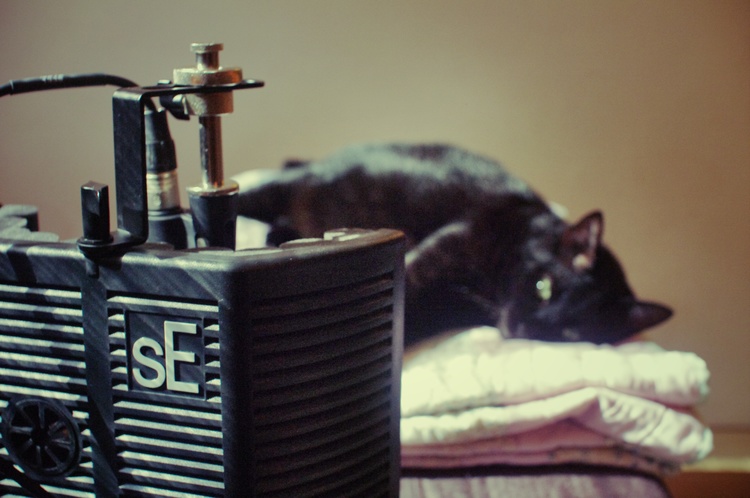But just because the word "guitar" is in the name doesn't mean that's ALL it's good for. Check out some recommended uses of the guitaRF, beginning with the most recognizable one:
The guitaRF lets you mount both a dynamic (or pencil condenser) and a hanging large-diaphragm condenser or ribbon directly in front of an amp. On stage, this can help reduce bleed into the back of a ribbon mic, for example, helping isolate the guitar tracks from whatever else is happening on stage. This can make a difference not just for the FOH sound, but also for the artist's in-ear and monitor mixes, as well as if the show is mixed later for a live album.
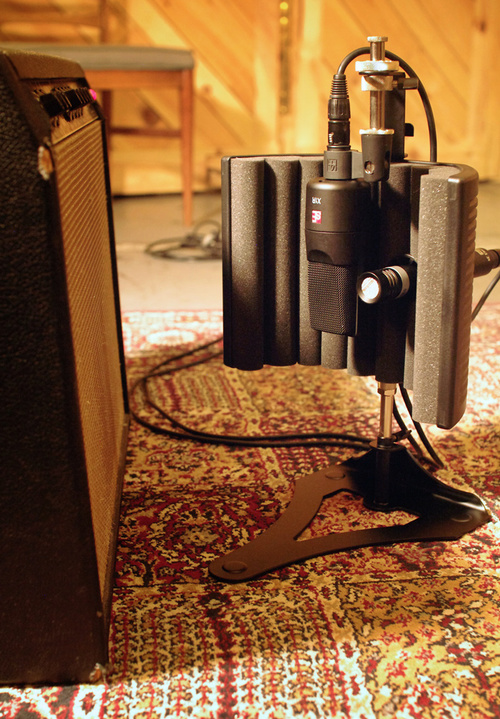
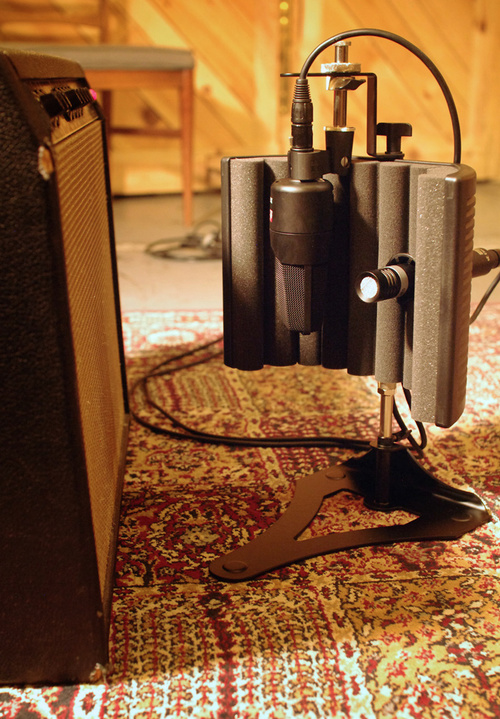
Since the guitaRF doesn't require additional mic stands for most amps, it also reduces the amount of equipment needed for two-mic recording techniques - and you can easily adjust the relationship between the two mics. For example, aiming one mic directly at the center of the speaker's dustcap, and angling the other towards the edge of the cone (see photos on the left).
Try experimenting with different angles to get different tonal blends - just a fraction of an inch will provide some dramatically different guitar sounds.
TIP: Use a ribbon mic for chunky rhythm sections, and mix the dynamic mic louder during solos for more edge.
ACOUSTIC GUITARS
When you're tracking a singer-songwriter, oftentimes you get the best performance if they sing and play at the same time. But if you want to edit, overdub, or process the vocals and guitars separately - e.g. with delay on one but not the other - it can be challenging if there's too much vocal bleed into the guitar tracks, or vice versa.
With the guitaRF, you can double-mic the acoustic with your favorite small-diaphragm condenser like our sE5 for a crisp high-end, and a ribbon mic like our X1 R for a thick, rich midrange. Then you can angle the guitaRF underneath your vocal mic, and keep the singer's voice from being picked up by either of your guitar mics.
TIP: Try panning your two guitar mics for a wider acoustic guitar spread in a sparse mix.
The guitaRF's included base stand is a perfect height for kick drum. To help keep room or stage bleed out of your outside kick mic, try setting it up anywhere from right in front of the drum head to several feet back.
If you're feeling adventurous, you can remove the rubber-finned pass-through grip (just push it through from the hard back side of the filter towards the foam-lined inside), stick a mic stand boom arm through the hole, and get an inside kick mic AND an outside kick mic in place (see photos below).
TIP: Mounting the guitaRF on a mic stand also allows you to angle it, which may help decrease bleed from the snare and high-hat.
Too much high-hat getting into your snare drum mic? Mount the guitaRF on a mic stand's boom arm, and position it at an angle between the snare and high-hat to reduce the hat bleed into your snare tracks. Then use your favorite dynamic or small-diaphragm condenser (inserted through the guitaRF's pass-through hole) on your snare as usual.
The best way to record a bluegrass band or small jazz ensemble is almost always in a single room, playing together. Some bleed between sources can be fine - and can even help gel the tracks together - but sometimes you want a little more isolation.
This can be especially challenging with upright bass. The guitaRF is perfect for double-miking an acoustic bass and keeping the drums, guitar, and singer out of these mics. You can even try angling one mic towards an F-hole and another towards the bridge for blending purposes.
TIP: Try a condenser and a ribbon for a great blend of crisp highs and full, natural lows.
Remember - there's no "wrong" way to use the guitaRF. If you just need to keep the sound of a room out of your recording, it will help with that. If you just need to quickly double-mic something, it will help with that. Feel free to experiment, and try it on any source you like!


